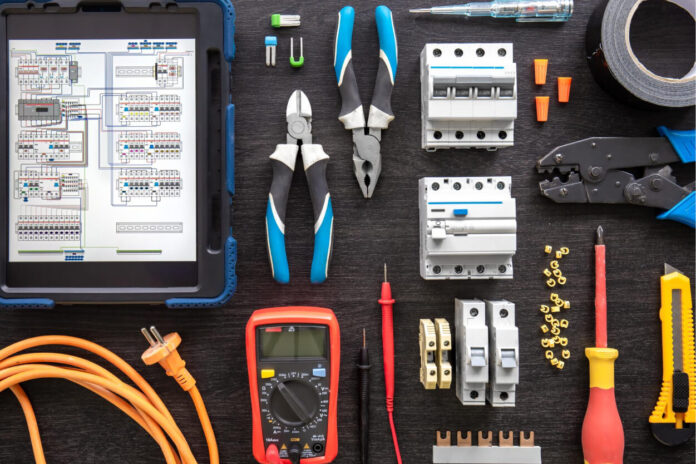Walk into any job site today and you’ll spot something interesting – those trusty hand tools that craftspeople have relied on for generations are getting quite the makeover. It’s not a flashy revolution with fireworks and fanfare, but rather a quiet evolution that’s changing how we work. Today’s hand tools blend old-school reliability with some pretty clever innovations that make life easier for the folks who use them day in and day out.
Hand-held tools remain the bread and butter of professional work across countless trades. These manual implements help us cut, shape, fasten, measure, and manipulate materials with a control that power tools sometimes can’t match. They shine especially bright when electricity isn’t available or when delicate touch is needed. What’s really cool, though, is how modern innovation has transformed these traditional standbys into high-performance tools that are kinder to your body while helping you do better work.
Revolutionary Hand-Held Tools Design: Fusion of Ergonomics and Smart Features
Remember those one-size-fits-all tools with rock-hard handles that left blisters after a long day’s work? Those days are fading fast. Today’s hand tools are thoughtfully designed to work with your body, not against it – because let’s face it, comfort isn’t just nice, it’s productive.
Modern tool handles are something of a minor miracle. Take a look at today’s professional pliers – what once had simple metal grips now sports multi-zone handles that feel like they were custom-made for your hand. As my buddy Mike, an electrician for 30+ years, puts it: “These new tools make my old ones feel like medieval torture devices. After running cable all day, I can still feel my fingers!”
The weight game has changed dramatically too. Tool designers have become weight distribution wizards, creating implements that feel balanced and natural. Modern hammers showcase this perfectly – they deliver serious impact while somehow sparing your elbow and wrist from the worst of it. It’s like they’ve figured out the physics of making metal feel lighter than it should.
Perhaps the coolest development is how traditionally simple tools have gotten surprisingly smart. Digital measuring tapes now remember measurements for you (no more scribbling numbers on scraps of wood!). Levels can actually tell you when you’ve hit perfect alignment with a little beep. These additions don’t complicate things – they just make good tools even better.
I particularly love the modular systems hitting the market. Rather than lugging around twenty different tools, professionals can now carry one high-quality handle with interchangeable heads. One minute it’s a screwdriver, the next a chisel or awl. For folks bouncing between job sites, this is nothing short of revolutionary for both their tool bags and their shoulders.
Breakthrough Applications of Material Technology in Hand-Held Tools
If there’s one thing that’s truly transformed hand tools in recent years, it’s the materials revolution. The stuff they’re making tools from these days would have seemed like science fiction to our grandparents.
Take titanium alloys – they’re changing the game entirely. At roughly half the weight of steel but just as strong, titanium hammers and pry bars let you work longer with less fatigue. They even naturally dampen vibration, which your joints appreciate after hours of use. Yes, they cost more upfront, but as any seasoned pro will tell you, your body’s wear and tear has a price tag too.
Carbon fiber is another material that’s making waves. Incredibly light yet remarkably strong, it allows for tool designs that were previously impossible. I watched a demonstration last year where a carbon fiber-reinforced wrench had just enough flex to protect knuckles during a slip without compromising strength. Anyone who’s ever skinned their knuckles on an engine block knows that’s worth its weight in gold.
The handle materials have gotten impressively sophisticated as well. New polymers maintain their grip properties whether you’re working in Minnesota winter or Arizona summer. Some incorporate tiny air pockets that absorb vibration while still giving you the feedback you need. Others stay grippy even when wet or oily – a godsend for mechanics and plumbers alike.
On the cutting edge of materials technology are metal matrix composites. By embedding ceramic particles in aluminum or magnesium, manufacturers are creating cutting edges that stay sharp for months instead of days. A woodworker friend of mine recently joked, “I used to sharpen my chisels so often I felt like it was part of my morning routine – coffee, sharpen, work. Now I almost miss the ritual because these new ones just keep going.”
Specialized coatings provide the finishing touch on modern tools. They’re incredibly thin – often invisible to the naked eye – but you’ll notice the difference in how the tool performs and how long it lasts. It’s like the difference between driving on ice with regular tires versus snow tires – subtle but significant.
-> Go Browse Our Product Catalog
Sustainability and Eco-friendly Concepts Embodied in Modern Hand-Held Tools Design
The tool industry has gotten serious about sustainability, and not just as a marketing gimmick. Today’s innovative tools reflect genuine environmental responsibility without asking users to sacrifice performance. Material choices now consider environmental impact alongside functionality. Bioplastics made from renewable resources like cornstarch are replacing petroleum-based plastics in many non-critical components. These materials perform just as well while leaving a lighter footprint on the planet. One manufacturer I visited makes screwdriver handles that are 80% plant-based – you’d never know the difference in your hand, but the planet certainly does.
Modular design is inherently eco-friendly because it extends product lifecycles. Instead of tossing an entire tool when part of it wears out, you simply replace the affected component. Screwdriver bits, saw blades, and measuring tapes can be swapped out while keeping the main body. As my friend in construction management puts it, “The greenest tool is the one you don’t have to replace entirely.”
Manufacturing has cleaned up its act considerably too. Water-based coatings have replaced solvent-heavy alternatives. Energy-efficient heat treatment reduces carbon emissions. Even packaging has been reimagined with recycled materials replacing those annoying plastic blister packs that require industrial scissors to open. These behind-the-scenes improvements might not be immediately obvious, but they represent meaningful progress.
Repair programs complement sustainable design beautifully. Leading manufacturers now provide readily available replacement parts and clear repair instructions. Some have even established refurbishment programs that extend tool life while offering cost-effective alternatives to buying new. This shift toward repairability marks a welcome departure from our throwaway culture.
Our company has made sustainability central to how we develop products. We believe you shouldn’t have to choose between doing right by the environment and having tools that perform at the highest level. We’d love for you to check out our eco-conscious tools and see how they can enhance your operations while supporting your environmental values.
Frequently Asked Questions
- What advantages do smart hand-held tools have compared to traditional ones?
Smart tools basically give you superpowers your predecessors never had – they measure with extreme precision, provide feedback when you’re on (or off) track, and remember details so you don’t have to. They keep what’s great about manual tools – reliability and tactile control – while eliminating guesswork and reducing errors. For professionals working in settings where measurements need to be documented or verified, these features aren’t just convenient; they’re game-changers for quality control.- Is investing in high-tech hand-held tools worth it for professionals?
For folks who use their tools daily, high-tech options usually pay for themselves through three main channels: you work faster because you’re less fatigued, your results are better because the tools are more precise, and your career lasts longer because your body takes less punishment. The math is pretty straightforward – professionals typically recoup their investment within a year through improved efficiency and less downtime. As one contractor told me, “These tools aren’t expensive; they’re cost-effective.”- How to evaluate whether the ergonomic design of hand-held tools is truly effective?
Don’t be fooled by tools that feel great in a quick in-store test but become uncomfortable after real use. The true test is how they feel after using them continuously for at least 15-20 minutes. Pay attention to pressure points, wrist position, and vibration. The most telling assessment comes after a full day’s work – truly ergonomic tools leave your hands less tired than standard options, regardless of fancy marketing claims. Trust your body’s feedback over impressive-sounding features.- Do eco-friendly hand-held tools compromise on performance?
Today’s eco-friendly tools match or even outperform conventional alternatives. The early days of sustainable tools sometimes meant trade-offs in durability or functionality, but those days are gone. Modern manufacturing techniques and materials science have eliminated this compromise. Many environmentally responsible tools actually perform better than traditional versions because they’ve benefited from innovative materials developed specifically for sustainable applications. You can do right by the planet without sacrificing quality.
-> Go Browse Our Product Catalog



